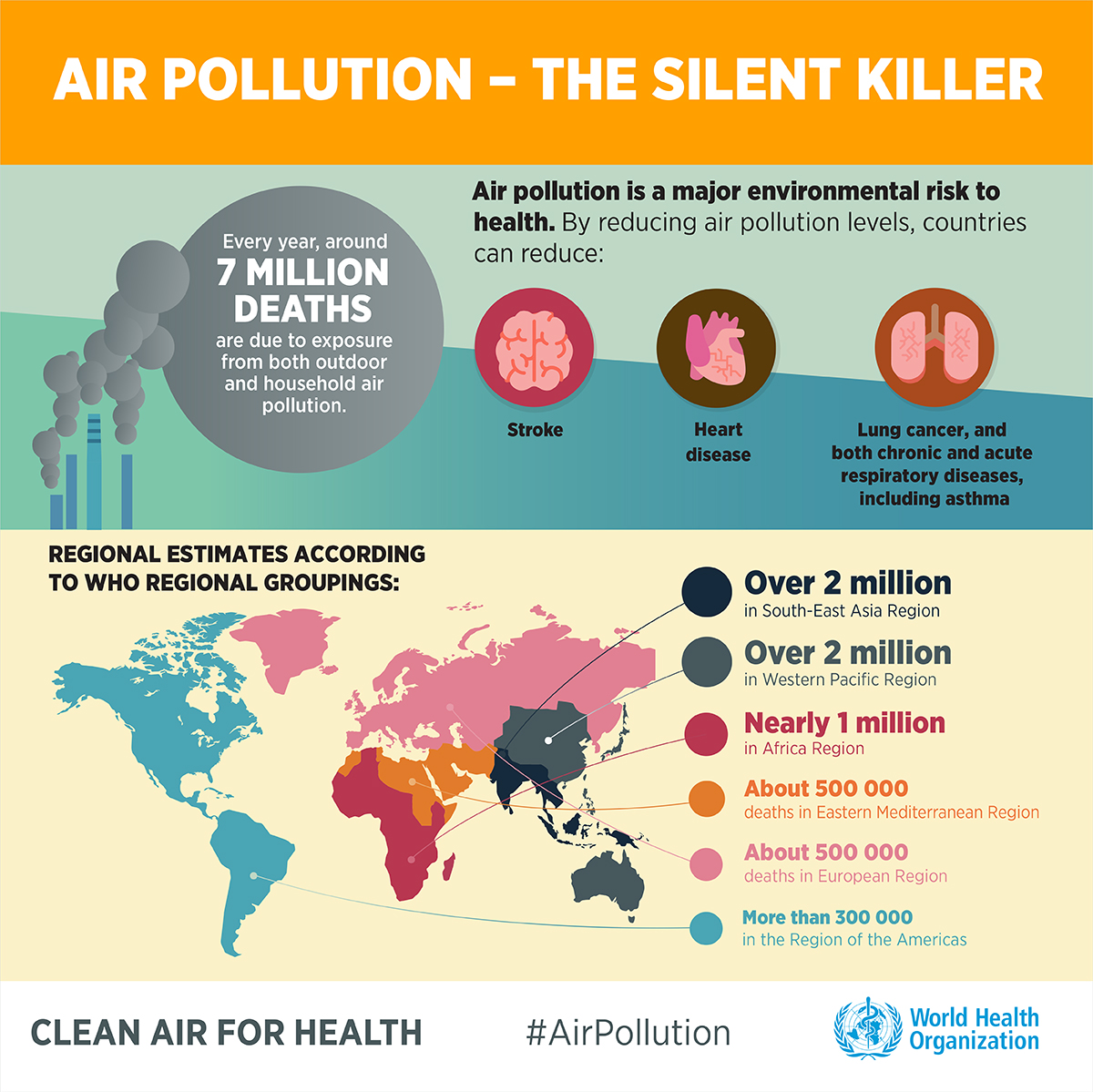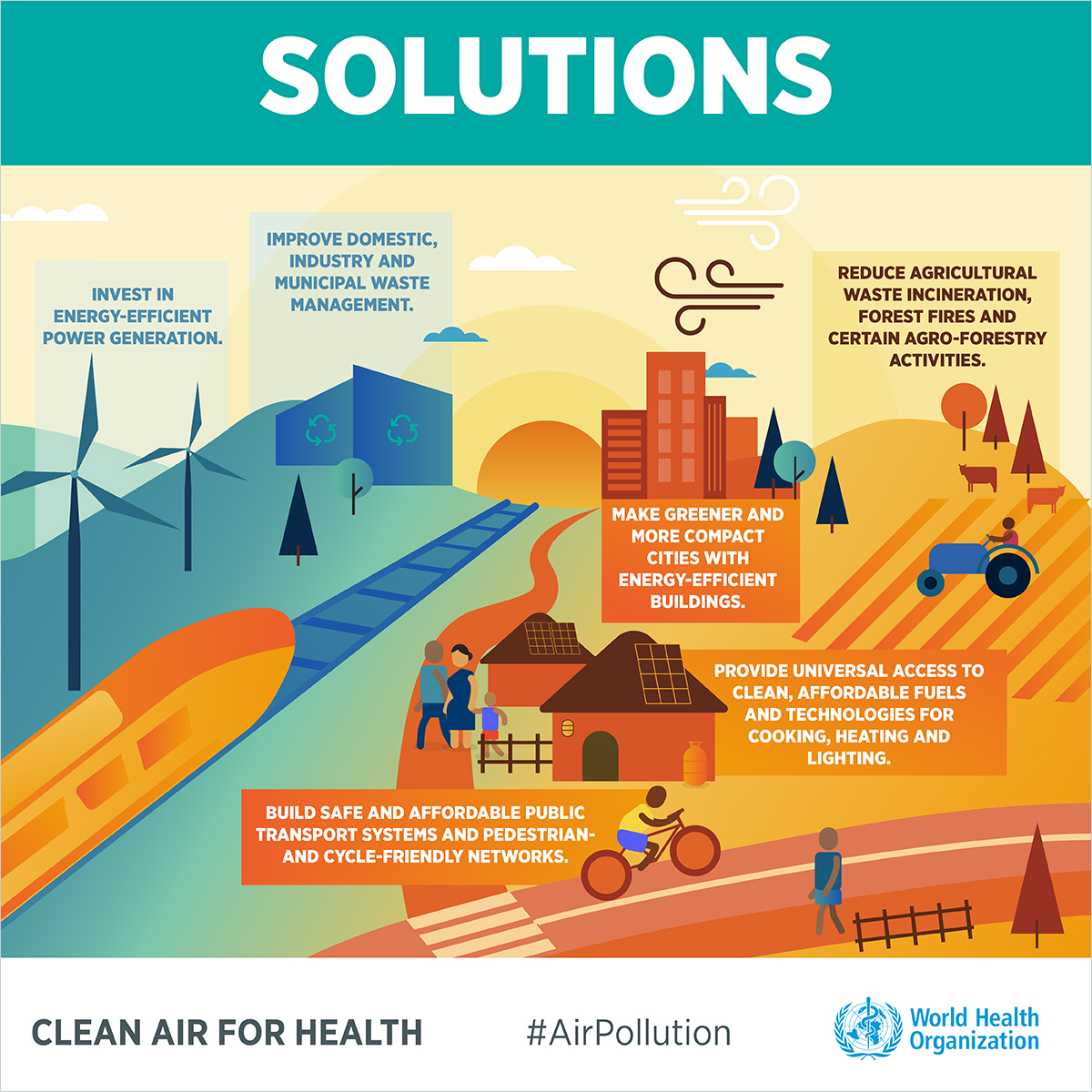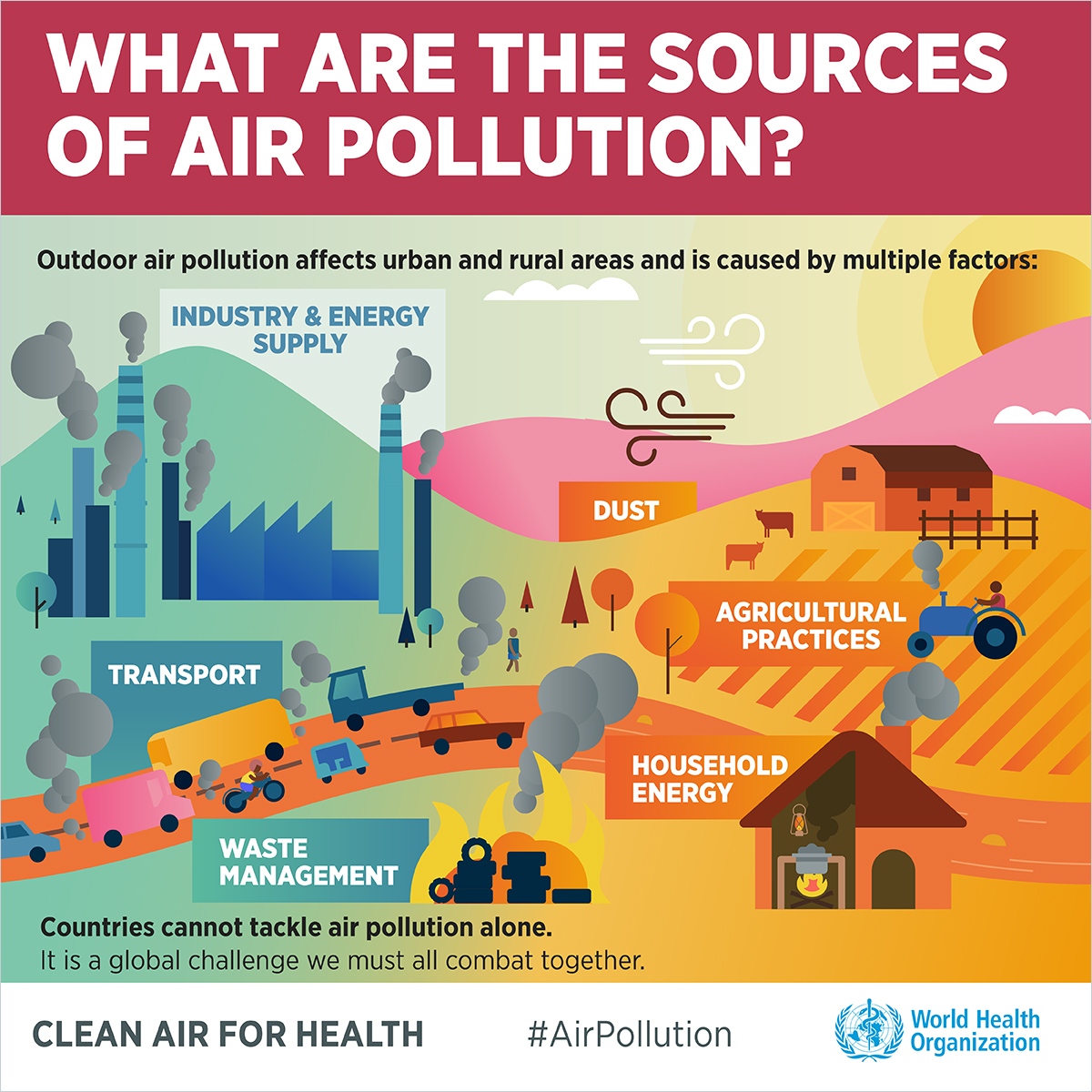Air pollution refers to the mixture of gaseous and solid substances that contaminate the atmospheric air including:
ozone (O3), nitrogen oxide (NO2), sulfur dioxide (SO2), biological molecules and particulate matter (PM).
Particulate matter and particularly the smaller inhalable particles of 2.5 microns or less in diameter (PM2.5), are the main reason of mortality due to air pollution1.
Exposure to air pollution is highly associated with disease and premature death.
Worldwide, 4.2 million people die every year due to outdoor air pollution 2. In 2018, there were 379,000 premature deaths in Europe due to PM2.5.
Air pollution affects numerous systems of the human body, beyond the obvious respiratory system, including the cardiovascular, nervous and reproductive system, as well as the liver, spleen and blood. Air pollution leads to eye, nose and throat irritation and has been associated with asthma exacerbation, chronic obstructive pulmonary disease, lung cancer, headache and anxiety 3.
Air pollution is also possibly associated with the current pandemic in two ways:
- increases susceptibility to COVID19 (exacerbates chronic cardiorespiratory conditions)
- SARS-COV2 is possibly spreading more easily and for longer distance using particulate pollutants as a vehicle


References
- 1WHO: https://www.who.int/news-room/fact-sheets/detail/ambient-(outdoor)-air-quality-and-health
- 2WHO: https://www.who.int/health-topics/air-pollution#tab=tab_2
- 3EEA: https://www.eea.europa.eu/themes/air/health-impacts-of-air-pollution
- Infographics: https://www.who.int/airpollution/infographics/en/

